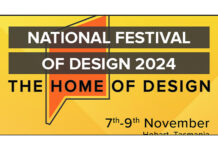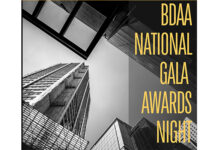 OK – I need you all to picture me taking a rather large breath and downing a bottle of Valium before attempting to write this post. Having worked for many years in both print and online publishing the issue of access to, use of and rights to images has always been a tricky one. I’d say the majority of our industry understands about copyright of design and images.
OK – I need you all to picture me taking a rather large breath and downing a bottle of Valium before attempting to write this post. Having worked for many years in both print and online publishing the issue of access to, use of and rights to images has always been a tricky one. I’d say the majority of our industry understands about copyright of design and images.
But, unfortunately, there still seems to be a handful of people – across all industries, not just ours – who conveniently claim ignorance when it comes to using images found on the internet.
I was talking recently to a photographer friend who had stumbled across some of his work (for a valued client) on a third party’s website. The third party is in our industry but not at all related to or connected to the client. When contacted by the photographer and asked for an explanation regarding the use of the image, the response was a genuinely confused, “But I found it on Google so I can use it, right?”
Cue steam from ears as in a cartoon caricature.
 The expansion of technology has created plentiful opportunities for our industry to showcase our work to a wider audience from both home and overseas. The ability to upload images to our own websites as well as social media sites such as Facebook, Instagram and Pinterest provides us with an electronic scrapbook with which we can connect with potential clients and grow our personal profiles.
The expansion of technology has created plentiful opportunities for our industry to showcase our work to a wider audience from both home and overseas. The ability to upload images to our own websites as well as social media sites such as Facebook, Instagram and Pinterest provides us with an electronic scrapbook with which we can connect with potential clients and grow our personal profiles.
But, this all comes with risk. As does the sharing of any information in an electronic forum.
You can add as many “Copyright” statements to your site, images or words as you like but it’s not going to necessarily stop your material being used without your knowledge. Of course, if such a transgression is uncovered and you decide to take action then the law is on your side but sometimes the question becomes whether or not it’s worth the time and cost of taking the transgressor to court.
 From my perspective as an editor, if clients are supplying me with images (rather than commissioning them myself) I will always attempt to ascertain that the images are owned by the client and are of their work. But it’s impossible to check every project submitted for every magazine and, to a certain extent, once you have built up a level of trust with a client that level of cross-checking should not be necessary.
From my perspective as an editor, if clients are supplying me with images (rather than commissioning them myself) I will always attempt to ascertain that the images are owned by the client and are of their work. But it’s impossible to check every project submitted for every magazine and, to a certain extent, once you have built up a level of trust with a client that level of cross-checking should not be necessary.
I don’t know for sure if the people using third party images are truly ignorant or are simply using this as an excuse and I certainly don’t have any easy answers for you. One positive element is that technology can work for you – there are ways to block visitors being able to save images from your site so talk to your IT professional about what levels of protection you are able to put in place. I don’t believe we’ll be able to stop this happening (unfortunately) but take what steps you can to ensure you make it as hard as possible.
Over to you – has your work ever turned up somewhere unexpected? If so, how did you handle it and what was the outcome?


































